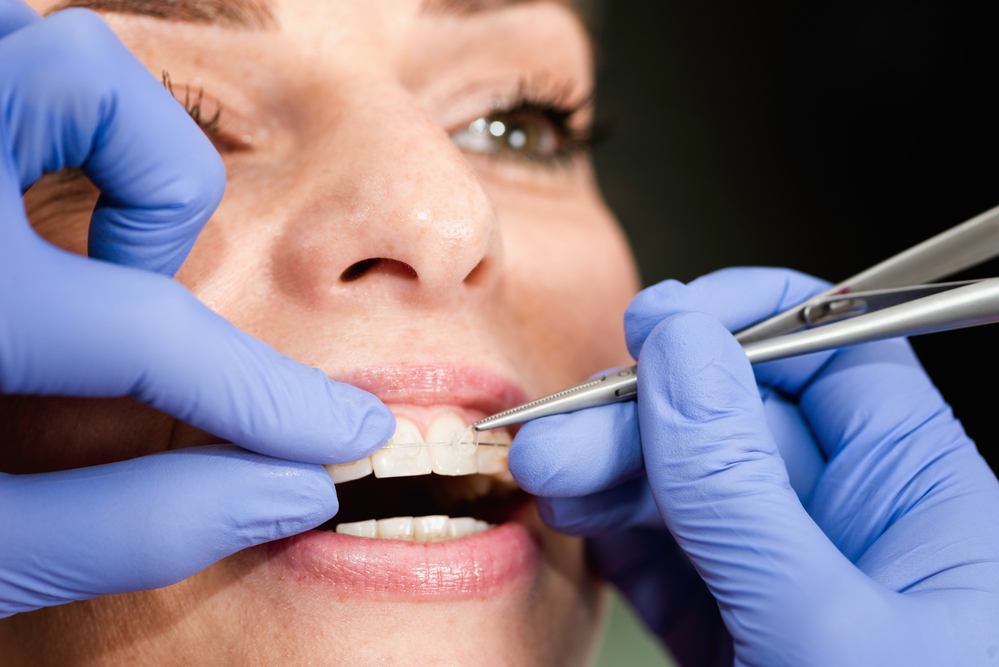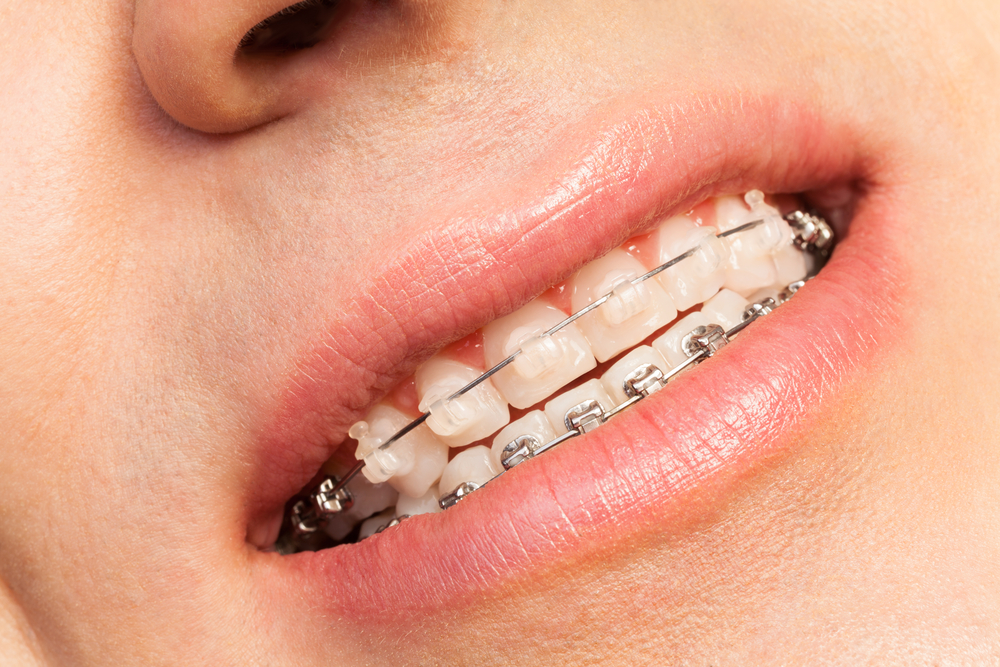When searching for a better smile, a common thing is to compare metal vs. ceramic braces. Both work in a similar fashion, but there are some key differences. Depending on your specific situation, one may be better for your needs, and we at Peterson Family Orthodontics can help you determine which is right for you.
Which Is Better: Metal Vs. Ceramic Braces?
For many people, the better option depends on the individual’s specific condition and aesthetic wants.
When looking at ceramic or metal braces, you can see that their methods of straightening are the same. Each has a bracket attached to the front of each tooth, but traditional brackets are metal, and ceramic braces have tooth-colored brackets. A wire attaches each bracket together, and tiny bands keep the wire in place. The orthodontist tightens this wire periodically to move the teeth to the desired position.
Both types are generally effective for various types of issues, including:
- Crooked teeth
- Gaps between teeth
- Crowded teeth
- Bite issues
In general, metal braces are a bit more effective, especially for severe issues, so they may be a better choice. However, ceramic braces are less obvious due to the tooth-colored brackets, wires, and bands, so they are popular for those who are self-conscious about their appearance while wearing braces.
Do Ceramic Braces Take Longer Than Metal?

When comparing metal vs. ceramic braces, in some cases, ceramic braces tend to take a bit longer to correct properly.
The average straightening process for both types of braces is between 18 and 24 months. Because the material used for ceramic braces is a bit more fragile than metal, it is possible that the brackets may break if under too much pressure when tightening the wire. For moderate to severe orthodontic issues, the orthodontist may not tighten them as much at each visit, which lengthens the total straightening time. If a bracket does break, the repair time lengthens the process.
What Are the Negatives of Metal Braces?
The main negatives of metal braces are visibility and irritation.
The material that makes up the brackets and wires of metal braces is nickel-titanium alloy or stainless steel. Both of these are extremely visible, which makes it obvious that the individual is wearing braces. Although this may not be as big of a deal for younger teenagers, whose peers may also be wearing traditional braces, it becomes more of an issue in older teens and adults.
The materials of metal braces tend to cause more irritation of the gums and cheek, especially in the initial phases. However, this irritation generally reduces or subsides after a period of time.
What Are the Negatives of Ceramic Braces?
The negatives of ceramic braces include breakage, staining, removal procedure, and cost.
As discussed previously, the ceramic brackets are more prone to breakage, both from the wire-tightening process and from eating hard foods.
Although the high quality materials that make up the ceramic brackets are resistant to staining, the clear bands that hold the wire in place can stain. To reduce staining, you should avoid dark-colored foods and beverages, such as berries, coffee, tea, cola, and tomato sauce. Fortunately, if the bands do stain, the orthodontist replaces them regularly, so it does not remain permanently.
Unlike the removal of metal brackets, the removal of ceramic brackets can cause some damage. Metal brackets tend to peel off without any issue. However, the glue that holds ceramic brackets in place is harder to get off, and removing them sometimes causes a loss of enamel.
Cost is another deterrent for some. The materials used for ceramic braces cost more than for metal, which makes them more expensive. If brackets need repair due to breakage, this also increases the cost. If the straightening time takes longer, this also affects the total expense, as there are more visits to the orthodontist. On average, ceramic braces cost $1,000 to $2,000 more than metal ones do.
What Type Between Ceramic and Metal Braces Are the Most Effective?
When comparing metal vs. ceramic braces, metal braces are the most effective overall.
Both ceramic and metal braces are effective for the majority of orthodontic issues. However, in more severe cases, such as severely crooked teeth or misalignments combined with bite issues, metal braces work the best. The material is able to sustain the higher pressure necessary to move the teeth and jaws.
How Are Metal and Ceramic Braces Similar?

Along with the mechanism used for straightening, there are similarities between both types of braces. These include specific dental hygiene requirements, food restrictions, and results.
Both ceramic and metal braces require great oral hygiene. However, the brackets and wires make it more difficult. Your orthodontist will review how to best clean around the brackets and along the gumline using your toothbrush and floss. You should expect to spend more time on oral hygiene no matter which braces you choose, and cleaning after every time you eat reduces the chances of staining the teeth around the brackets.
There will be food restrictions for both types of braces. To reduce staining, you should avoid dark-colored food and beverages. To prevent breakage of the brackets, you should stay away from sticky foods, hard candies, gum, and popcorn. You can eat certain hard foods, such as apples and carrots, but you should cut them into smaller pieces before consuming them.
As long as you choose the right type of braces for your situation (ceramic for mild to moderate issues and metal for more serious misalignments), the end result is straighter teeth and a perfect smile.
Who Can Help You Decide Between Metal Vs. Ceramic Braces?
When debating between metal vs. ceramic braces, we at Peterson Family Orthodontics can help. We will examine your mouth and jaw to see what issues you are experiencing and discuss what your main goals are. Based on everything, we can recommend the type that is right for your situation and answer any of your questions. Whether you or your child are looking for braces, contact us today to schedule a free consultation.

